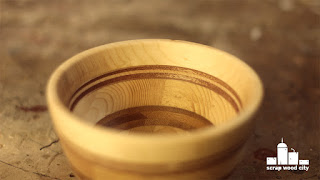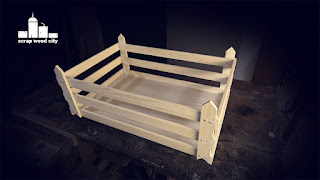I made this tray out of precut spruce lumber.
First of all I cut the frame of the tray. All the pieces have a 45 degree miter. To create that bevel I cut all the pieces using my 45 degree miter sled on the table saw.
The bottom panel of the tray slides in a groove which is created in the sides of the tray. I created this groove, by making a series of rip cuts on the table saw. I slightly moved the fence back until I reached a snug fit.
Using my cross cut sled, I cut all the pieces of the bottom to size.
I then glued everything together. The bottom pieces have just a few drops of glue because I want them to be able to expand and contract through climate changes.
During the glue up, I used a frame clamp. I also used a regular clamp to force everything to be square.
I then reinforced the corners with splines. I first created the grooves for the splines, using my spline making jig. I then cut out a few thin splines on my table saw and glued them in place. I trimmed them flush with a flush trim saw and a sharp chisel.
I then filled any gaps using glue and sanding dust.
I chamfered all the outer edges with a block plane.
I made a jig to mark equal distances from the edges of the tray. I then drilled the holes that receive the rope handles.
I sanded everything with 100 grit sandpaper.
I applied a coat of white stain. After that coat was dry I sanded the high spots with 240 grit.
I applied another coat of stain and then finished the tray with a protective coat of water based, clear, satin varnish.
I then added the rope handles. I secured them in place with a knot and hot glue.
My tray came out really nice and I am really happy with the way it looks!







































